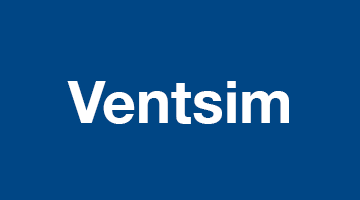MechChem Africa talks to Manini Phokwane Ramagaga, technical advisor for the National Foundry Technology Network (NFTN), an initiative of the Department of Trade, Industry and Competition (the dtic) about an intervention completed at Steelbest foundry that secured the future of 130 jobs.
Click to download and read pdf
“Steelbest, formerly known as Zealous foundry, specialises in high pressure die casting, mostly of aluminium components for the automotive industry,” begins Manini Phokwane Ramagaga, who has a metallurgical engineering degree from the University of Johannesburg and over 20 years of experience in the South African Foundry industry, most notably in the automotive and jobbing casting sectors.

“The company makes cast components for cam-carriers, water pump housings, engine and axle components, housings, street lights, general engineering products and castings for the food industry,” she adds.
“With the NFTN, my current role is to give technical support to the South African foundry industry, at large. I also contribute to the technical support of the existing South African steel and metal casting sector through research, development and productivity growth to promote local and export consumption i.e. to improve the casting industry’s global competitiveness and its technical and regulatory compliance. It was in this capacity that I was first introduced to Steelbest, who had approached the NFTN to investigate a quality related challenge with regards to pinhole-porosity that was causing an exceptionally high scrap rate on an aluminium casting for a key automotive client,” she tells MechChem Africa.
“This challenge was preventing the company from meeting the client’s turnaround times for quality cast products; critical in the automotive sector, which assembles based on just-in-time principles; where every component has to be delivered on time for vehicles to be produced efficiently,” she adds.
The high scrap rate was leading to poor productivity levels of acceptable quality, which was compromising the completion of orders due for delivery, she explains. If the foundry could not keep up with stock levels, this could have caused another South African foundry to close.
“I was initially asked to do a metallurgical assessment, but it became apparent from a gap analysis that this was a multi-facetted challenge, which could be attributed to process, die design and metallurgical skills shortcomings.
First off, a professional metallurgical skill set was required to meet the automotive requirements. “Having worked in the sector myself, I knew that an in-house metallurgist was going to be required and would be beneficial for the foundry for long-term success.
The NFTN partners with academia, science councils and government agencies who assist with human capital development within the SA foundry industry. This includes assistance with the development of artisanal, professional and specialised skills.
“Through our NFTN collaboration with Mintek, one of the three (3) Science Councils in the country with a skills development programme, for training and placing engineering personnel into South African industry, a metallurgical engineer was seconded, who has since been permanently employed as a metallurgist at Steelbest. We are hopeful that the young people we place will rise up the ranks and pass on their skills to more young people in the sector,” she notes. The second intervention involved the simulation of the die component itself from eastern Asia. The die was optimised through simulation of the solidification rate so as to reduce the defects that occurred. “The die was modified using the results of the simulation to regulate the solidification rate and to keep the temperatures even in all areas,” Ramagaga tells MechChem Africa. “This led to a further research and development collaboration between the foundry and a leading European Simulation Research Science Council, playing a key role in the automotive sector.
“To get the benefit of the upgraded die design, we then had to optimise the process and production output efficiencies, which was also at the core of resolving the challenge. That led to process operators being trained on the new improved process, and five additional operators were found to be needed,” she continues.
These multi-faceted interventions significantly reduced the pinhole-porosity scrap challenge and raised the quality of the end products. They also generated a high degree of confidence in the capacity of the foundry to deliver to the automotive original equipment manufacturer (OEM).
When the original modified die design needed to be replaced, the new and optimised die was ordered, which further improved product quality and productivity. With the optimised die , the new metallurgist, the new process, the newly trained die operators, and all of the required quality checks, the scrap rate decreased to below 2.0 % – from nearly 25%. This resulted in the global order being renewed for a further nine years, securing work for the foundry up to 2028.
“Retention of jobs was key for the NFTN and the dtic and the way to do that is to develop a strong and sustainable order book, which for a global automotive OEM, means that high quality standards have to be achieved and maintained. “This success proves that the SA Foundry Sector can do it. With a bit of effort and cooperation and by going back to fundamental metallurgical principles, the South African foundry sector can produce high quality castings that can compete on a global scale,” Ramagaga concludes. q













